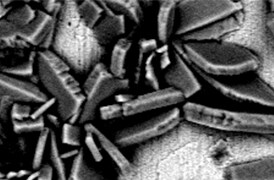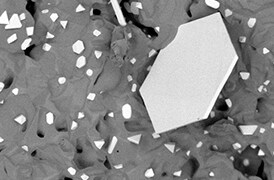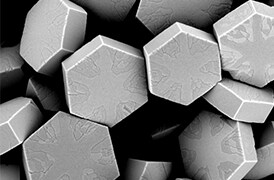Search Thermo Fisher Scientific
- Contáctenos
- Orden Rápida
-
¿No tiene una cuenta? Crear una cuenta
Search Thermo Fisher Scientific
Thermo Scientific AutoScript TEM Software is a scripting environment combining a TEM-specific Python API with the Python editor. Thermo Scientific software packages for electron/ion microscopy, such as Maps Software and Tomography Software for automation and for mapping, are great for making collection of standard information easy. However, industrial automation and fundamental research often require advanced techniques for imaging and analysis that cannot be covered in the scope of general purpose software. AutoScript TEM Software provides access to the microscope controls in a Python environment to define your application tailored to the question at hand.
AutoScript TEM Software for TEM is the customization toolkit tor transmission electron microscopes. Built around Python, it provides you the power to automate workflows and associated processing pipelines built to solve specific research questions.
AutoScript TEM Software:
An integrated development environment (IDE) makes it easy to get up and running with AutoScript TEM Software. Object browsing and syntax tools with auto completion are all included to ensure a rich user experience and rapid, consistent scripting framework.
Harness the power of your microscope using the most popular scientific programming language. AutoScript TEM Software is built on Python 3.5 and includes a number of pre-installed libraries for scientific computing, data analysis, data visualization, image processing, and machine learning.
| System requirements |
|
| Common packages |
|
| Application examples |
|
| Compatibility |
|
An optional offline mode is available to provide simulation of the microscope. Scripts can be tested offline on user PCs before going to the microscope. Regular updates available with new functionality. For latest information please check: https://www.fei-software-center.com/tem-apps/tem-applications-update-page/
Example of the tile acquisition in TEM. Please also check STEM tiled acquisition script
Example of the tile acquisition in TEM. Please also check STEM tiled acquisition script
La industria moderna exige un alto rendimiento con una calidad superior, un equilibrio que se mantiene a través de un control de procesos sólido. Las herramientas SEM y TEM con software de automatización exclusivo proporcionan información rápida y multiescala para la supervisión y la mejora de procesos.
El control y garantía de calidad son esenciales en la industria moderna. Ofrecemos una gama de herramientas de EM y espectroscopía para el análisis multiescala y multimodal de defectos, lo que le permite tomar decisiones fiables e informadas para el control y la mejora de procesos.
Se investigan nuevos materiales a escalas cada vez más pequeñas para lograr el máximo control de sus propiedades físicas y químicas. La microscopía electrónica proporciona a los investigadores información clave sobre una amplia variedad de características materiales a escala nanométrica.

El desarrollo de materiales suele requerir caracterización en 3D en varias escalas. Los instrumentos DualBeam permiten el corte en secciones en serie de grandes volúmenes y la posterior adquisición de imágenes SEM a escala de nanómetro, las cuales se pueden procesar en reconstrucciones 3D de la muestra de alta calidad.

Los novedosos materiales se deben analizar a una resolución cada vez mayor, manteniendo el contexto más amplio de la muestra. El análisis de escala múltiple permite la correlación de varias herramientas y modalidades de obtención de imágenes, tales como microTC de rayos X, DualBeam, PFIB láser, SEM y TEM.

El desarrollo de materiales suele requerir caracterización en 3D en varias escalas. Los instrumentos DualBeam permiten el corte en secciones en serie de grandes volúmenes y la posterior adquisición de imágenes SEM a escala de nanómetro, las cuales se pueden procesar en reconstrucciones 3D de la muestra de alta calidad.

Los novedosos materiales se deben analizar a una resolución cada vez mayor, manteniendo el contexto más amplio de la muestra. El análisis de escala múltiple permite la correlación de varias herramientas y modalidades de obtención de imágenes, tales como microTC de rayos X, DualBeam, PFIB láser, SEM y TEM.
Para garantizar un rendimiento óptimo del sistema, le proporcionamos acceso a una red de expertos de primer nivel en servicios de campo, asistencia técnica y piezas de repuesto certificadas.


